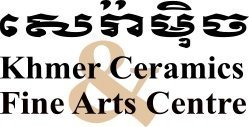Raku firing is a pottery technique known for its rapid process and dramatic results.
It has its origins in Japan and is traditionally associated with tea ceremonies, primarily in the form of chawan tea bowls. The Western version of raku, developed in the 20th century by studio potters, differs from traditional Japanese raku. While Japanese raku typically involves hand-built bowls of modest design, Western raku is renowned for its vibrant colors and is available in various shapes and sizes. In our practice, we predominantly follow the Japanese traditional approach while adapting our Cambodian local sources and Asian bowl shapes to create our unique raku pieces.
Typically conducted in small kilns, pottery pieces in raku firing are heated to a low temperature, removed while still red-hot, and placed in combustible materials like sawdust or leaves. This rapid cooling process creates unique glaze effects and crackles, setting it apart from conventional pottery firings and resulting in unpredictable outcomes.
Raku clay and glazes are distinct from those used in regular pottery. The clay must be sturdy enough to withstand the rapid cooling process. As a first step, we conducted tests on various raku clay compositions, adding different grogs in varying proportions to determine the most effective combination. Subsequently, we tested and adapted our glazes accordingly.
Orsina’s volunteer assistance has been invaluable in sustaining our project, not only by helping develop a specialized clay for Raku firing but also by experimenting with new shapes to expand the artistic possibilities of this unique firing process.
The entire process has been incredibly satisfying and enjoyable for us, and we hope you will also enjoy watching our video showcasing the final firing.
